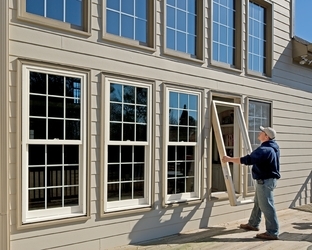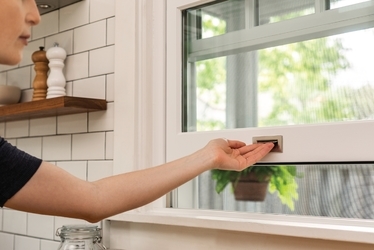Visit us at the Glass House Gallery located in the Indiana Design Center - Carmel, In

When you are replacing or upgrading your windows, you face a myriad of decisions. No doubt you’ve already read and researched more about vinyl vs. aluminum clad vs. fiberglass than you ever wanted! When you make an informed choice, you’re well on your way to a successful project. But there is one more factor to consider: the installation method. Should you opt for a window insert or a whole window replacement? Time to learn about the differences, weigh the pros and cons, and make the call.


Window Insert vs. Whole Window Replacement
Many of us get so caught up in figuring out the right window that we overlook the installation. Let’s just put them in and call it a day already! But this final decision makes a big difference when it comes to quality, longevity, efficiency, and, of course, budget.
What is a Window Insert?
Most of the windows that are placed in existing homes are installed with the insert method. This is just what it sounds like: the new window, frame and all, is inserted into the old frame. This technique is faster, less intrusive, and less costly than a whole window replacement, we’ll give it that. But it’s important to look at what you are sacrificing for speed and a cheaper initial price.
You will lose a few inches of window, and you will also see a lot more “meat” - or bukliness. Aesthetics aside (though they are critical in your decision), the big issue is that you are not replacing what is damaged. You’re leaving it in place and covering it up.
Imagine that you have a spot of rust on your vehicle. You could just sand it a bit and apply some touch up paint. It’s a Band-Aid. Ultimately, rust wins. It will eat away your efforts - and then spread to spite you. Or you could spend a bit more time and money and take your ride to a body shop, where they will strip trouble spots down to bare metal, replacing panels if necessary, and use specialized epoxy primers and paints to make it look (and run) like new.
This is the same idea. With a window insert, you are not fixing underlying damage. You’re covering it up. It’ll get you through a few years, but after that, you’ll need to think about another window replacement project.


What Is Whole Window Replacement?
You can find someone to do a window insert at a much lower price point because it’s significantly easier to do. Skill set-wise, it doesn’t require nearly as much expertise. An installer or contractor who knows how to do the full replacement will charge more - but you are getting more in return.
To really understand why, you need to go back to the beginning: with how your home was designed. All new homes have a water management system around the building envelope that is meant to divert water away from the building. Windows are tied into that system through the flanges that surround them. These connect directly to the sheathing on the outside of the house, and there is an additional water barrier on top of that.
As mentioned, when you do a window insert, you leave everything as is and replace only the functional part of the window (i.e. the glass and sash). You go from having a complete water management system protecting your house to a bead of caulk protecting your house. And it’s inevitable, like touchup paint on a rust spot, it will fail. When the caulk fails, so does your protection.
With a whole window replacement, you remove everything that went into the window - and water management system - originally. Frame, sash, trim… it all goes, leaving a rough opening like you’d see in new home construction. Then, the contractor gets to work installing the entire unit with not only a new window, but new insulation, trimwork, and reattachment to the water management system.
Window inserts and whole window replacements are two completely different processes that require completely different processes, products, and skill sets.
What’s the Best Choice?
When it comes to window insert vs. whole window replacement, the best choice is one that works for your needs and goals. For example, if you plan on moving in the next three to five years, you may not want to invest in a whole window replacement. You want a stop-gap to get you through. If that’s your goal, a window insert may be just the (temporary) solution you need.
On the other hand, if you’re in your forever home - and if you don’t want to replace the windows in another few years - upgrading your windows and your installation method makes sense. This will give you the longevity you need; and when you consider the cost in decades rather than years, the higher upfront cost offers a terrific return on your investment. It will also keep your home protected from water damage and wood rot - two nasty enemies that can cause extensive, and expensive, problems.
Ask the Franklin Window & Door Experts
Our goal isn’t to sell you on any one product or any one installation method. It’s to ensure that you have access to the information and education you need to make the right decisions for you. We want the best for your home - whatever that means to you. If you have questions about window insert vs. whole window replacement, don’t hesitate to ask our team.
For help navigating the wide - and often confusing! - world of windows, contact Franklin Window & Door today.
200 S Rangeline Rd.
Suite 117
Carmel, Indiana 46032
Monday – Friday:
9am – 5pm
Evenings & Weekends:
By Appointment
Copyright © 2024 Franklin Window & Door. All Rights Reserved.
No Comments Yet
Let us know what you think